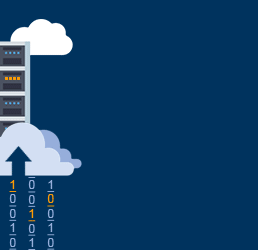New on LowEndTalk? Please Register and read our Community Rules.
All new Registrations are manually reviewed and approved, so a short delay after registration may occur before your account becomes active.
All new Registrations are manually reviewed and approved, so a short delay after registration may occur before your account becomes active.
Dirty COW Vulnerability - Kernel Update Oct 21st
I hope everyone is patched up for this very serious vulnerability called Dirty COW disclosed on October 19, 2016.
It is a privilege escalation vulnerability in the Linux Kernel existing since Kernel v2.6.22 thru which an attacker may gain write access to any file they can read, and then increase their privileges system-wide.
DO posted a nice How To Protect Your Server Against the Dirty COW Linux Vulnerability
Check your kernel version.
uname -rv
Anything below the versions stated below are vulnerable:
*4.8.0-26.28 for Ubuntu 16.10
*4.4.0-45.66 for Ubuntu 16.04 LTS
*3.13.0-100.147 for Ubuntu 14.04 LTS
*3.2.0-113.155 for Ubuntu 12.04 LTS
*3.16.36-1+deb8u2 for Debian 8
*3.2.82-1 for Debian 7
*4.7.8-1 for Debian unstable
##CentOS and Redhat are yet to release a patch fix.
My biggest concern is with OpenVZ Containers... What is the remedy for OVZ as they are all stuck at Kernel 2.6?

















Comments
My understanding is that this exploit cannot be used for container or virt breakout. I've also heard RHEL 6 is unaffected.
Affected kernel versions in RHEL6 are located in the DO post mentioned by the OP. RHEL 6 is affected.
https://access.redhat.com/sites/default/files/rh-cve-2016-5195_1.sh
Partial Mitigation Resolution
https://bugzilla.redhat.com/show_bug.cgi?id=1384344#c13
If you're running KernelCare then this was patched yesterday for most kernels: https://www.cloudlinux.com/kernelcare-blog/entry/dirty-cow-vulnerability-the-fix-is-coming
So does that mean even if my OVZ VPS is running :
2.6.32-44-pve #1 SMP Mon Jan 25 13:03:39 CET 2016I am not affected ?
Just got a ticket reply from my provider saying "OpenVZ is not affected by this. You are safe."
What does that mean ? If its a kernel level exploit and some gains access to my public web app, he cannot gain privileged access ?
I seriously doubt the "layers" we are talking about
@mehargags
Well also if the provider is using kernel care the actual kernel patch version wouldn't show.
I dont think kernelCare provide kernel patching for Proxmox
They do, we use it
Confused Shouldn't they be vulnerable?
Shouldn't they be vulnerable?
*Edit: For the second one, I suppose I misunderstood the "centos has not released a fix yet" part.
excuse me, I am eating a hat right now.
the detection script is too basic it just checks against known centos/rhel provided kernel versions to see if you're vulnerable. If you use elrepo or other non-rhel/centos provided kernel versions then the detection doesn't work
standard centos 7 kernel
elrepo 4.7.5kernel isn't detected as vulnerable because the detection script isn't looking for that kernel version
similarly linode fixed 4.8.3 kernel for this flaw isn't detected
So what Kernel Version are you using exactly ?
I guess the providers should mail all customers informing them as there will be many who will feel "unsafe" not being able to go past v2.6 after an apt-get upgrade.
Looks like
kpatch-description: 8;2.6.32-47-pve_2.6.32-179
If you want to test for the vulnerability, PoCs is a better resource.
The mitigation code that I have seen so far block against the one known exploit in the wild that uses
/proc/self/mem.https://github.com/scumjr/dirtycow-vdso escapes containers and SELinux.
thanks for heads up - all patched
Useing Grsecurity kernel test patch's, no sure when this was fixed, but the Grsecurity patched kernel i built on the 7 Oct using kernel 4.7.6,
i've tried ever Poc none of them seem to be working.Edit
It seem that one's based on /proc/self/mem are non working, but one's useing PTRACE_POKEDATA seem to still work fine.
sea2 says 2.6.32-43-pve #1 SMP Tue Oct 27 09:55:55 CET 2015
so it's still vulnerable?
I believe I said this earlier, kernelcare doesn't show the new version via the uname command. You can only see what the live patched version is by running the kernel care command, which only works on the host node.
Interesting comment taken from https://bugzilla.redhat.com/show_bug.cgi?id=1384344
I might be completely barking up the wrong tree but I had a further look in to it myself, this seems very similar to the XSA that caused amazon to reboot not so long ago with the big embargo on Xen.
There's a different flavor of exploit in the wild that does not use /proc/self/mem, but relies on ptrace instead. @Razza reported above that the ptrace-variants seem to be still working.
Am I right in thinking this isn't a vulnerability that can be exploited over the net? For pretty much all the servers I run, I'm the sole command line user.
I believe the exploit requires some sort of shell access even if limited or at least the ability to exec something and access to 'a file'
I need to congratulate the author of that page for the excellent title chosen.
What baffles me is the absence of a proper fix. If the problem has been disclosed, why is there no effective patch yet? Is it a design issue and can't be patched?
I thought that most distros had the kernel patched and you just need to do an update. It's the routers and other devices that are a problem. You might like the El Reg article, Dirty Cow Explained.
Idk, the guys above said that the patch is for the specific implementation found on the wild and different implementations still exploit this fine. I.e. the root cause is unfixed.
Don't you need a local account to use this exploit?
"although it is a local privilege escalation bug, remote attackers can use it in conjunction with other exploits that allow remote execution of non-privileged code to achieve remote root access on a computer"
arstechnica.com/security/2016/10/most-serious-linux-privilege-escalation-bug-ever-is-under-active-exploit/
This specific bug is a race condition with copy-on-write pages, but the real problem is the
madvise(., MADV_DONTNEED)call which is a design issue.The first exploit known was an SQL injection sent over the net. The real problem is that it is almost impossible to block - it makes a mockery of all the usual protection mechanisms.
As I understand it, it's going to require a lapse in security like that (where the system is likely to get owned anyway), or a mechanism that allows a user to create a file and execute it.